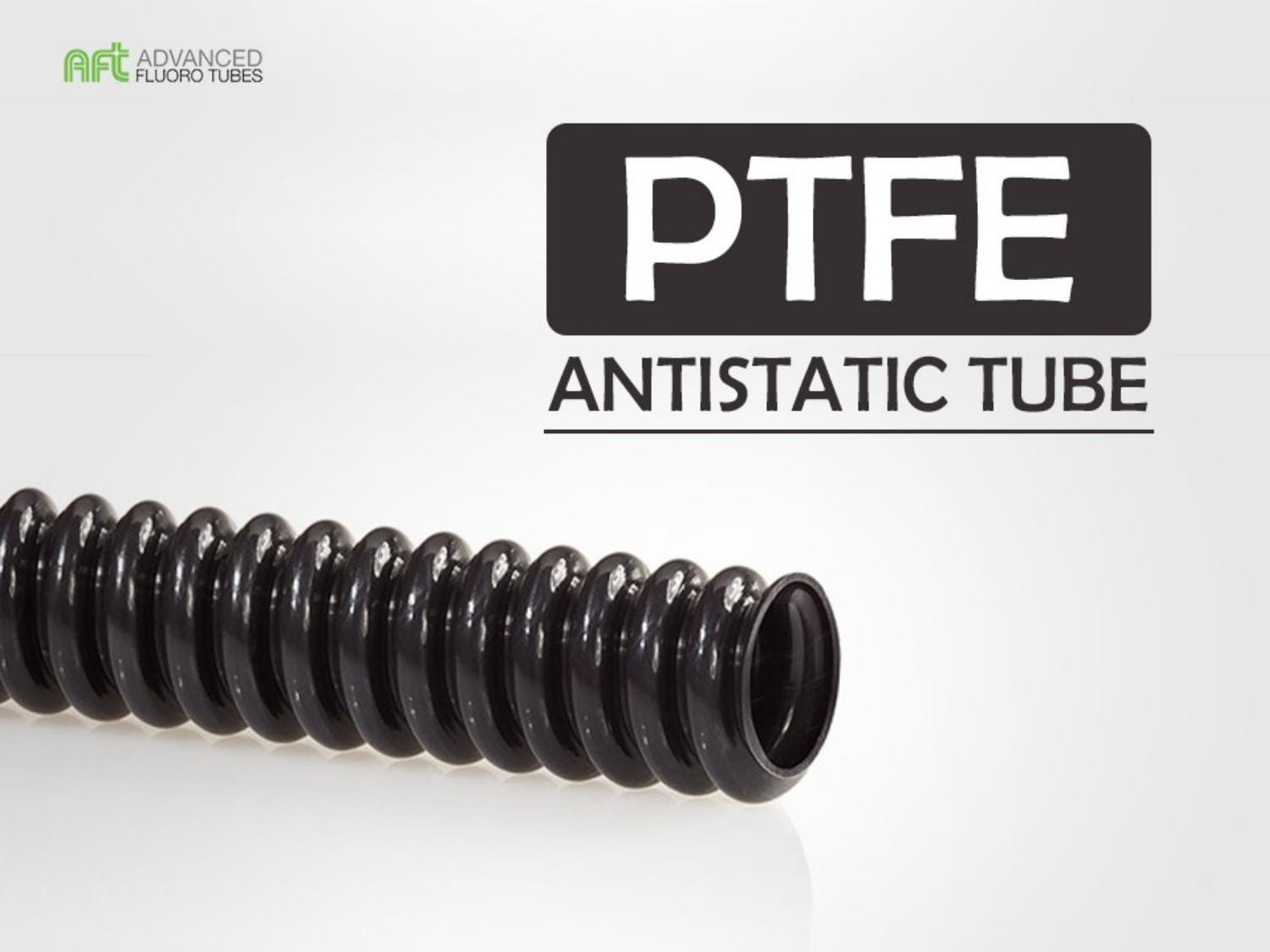Polytetrafluoroethylene also is known as PTFE is an opaque white fluoropolymer that can be chemically created and the process is known as free radical polymerization or using the process of multiple tetrafluoroethene molecules. PTFE is used in a wide number of applications and industries such as automotive, aerospace also telecom.

In
applications where static charge is created (i: e using a medium
complete with a high flow rate), it is advisable to use conductive
(antistatic) PTFE tubing. When one uses a static charge it can ignite
the medium (because of electric sparks) or can cause holes in the wall
tubings. The filler in the tubing does not prevent static charge and
enables good and safe guidance.
Conductive (antistatic) PTFE tubing is available from stock in smooth design.
You’ll discover that PTFE tubes or rods are combined with metals such as stainless steel or carbon that increases the strength of and wear resistance.
PTFE Properties
PTFE has a few distinctive properties and that is why it is preferred by most industries. It is resistant to chemicals, heat, electricity, and it is highly flexible as well.
PTFE has a melting point of 327 degrees Celsius and it is chemically inert. Even when it is put through extreme temperatures such as high temperatures (260-degree Celsius) and low temperatures (-200 degrees Celsius) it does not change or shows any signs of degradation. I
· It has impeccable flexural strength that too in extremely low temperatures.
· It has stupendous electrical strength
· It is a potent force for its dielectric strength
· Its water resistance power is pretty high as well
· It has a low coefficient of friction
· It has a very high-density level (2200kg/m3)
The fact that PTFE is chemically inert that it only reacts to only a few chemicals, so the only way to cause any impact on it is via energy radiation.
What are the Properties of Filled PTFE
Pure PTFE is subject to deformation under pressure, there are a few additives that can come to the rescue. However, all kinds of filled PTFE (modified) cannot be used in food and beverage applications.
Although some PTFE tube manufacturers do add filler to pure PTFE for its inherent advantages, they being its strength can be increased, the electrical conductivity can increase and its abrasive-resistance also increases manifold. But fillers can affect PTFE on some other levels, such as chemical resistance. If you are a PTFE hose manufacturer and want to add fillers you need to focus on the kind of properties you want to improve.
Benefits of PTFE
We already know PTFE has a wide range of applications. So it can be used in both the engineering and manufacturing fields, PTFE coatings are used to make different kinds of parts such as screws and bearings that are resistant to corrosion.
PTFE coatings can do away with concerns regarding the wear and tear of screws and bearings if they are coated with PTFE. It makes components heat-resistant too. PTFE tubings can be used in food industries as it is non-toxic since it is FDA-approved it is safe to use.
No comments:
Post a Comment